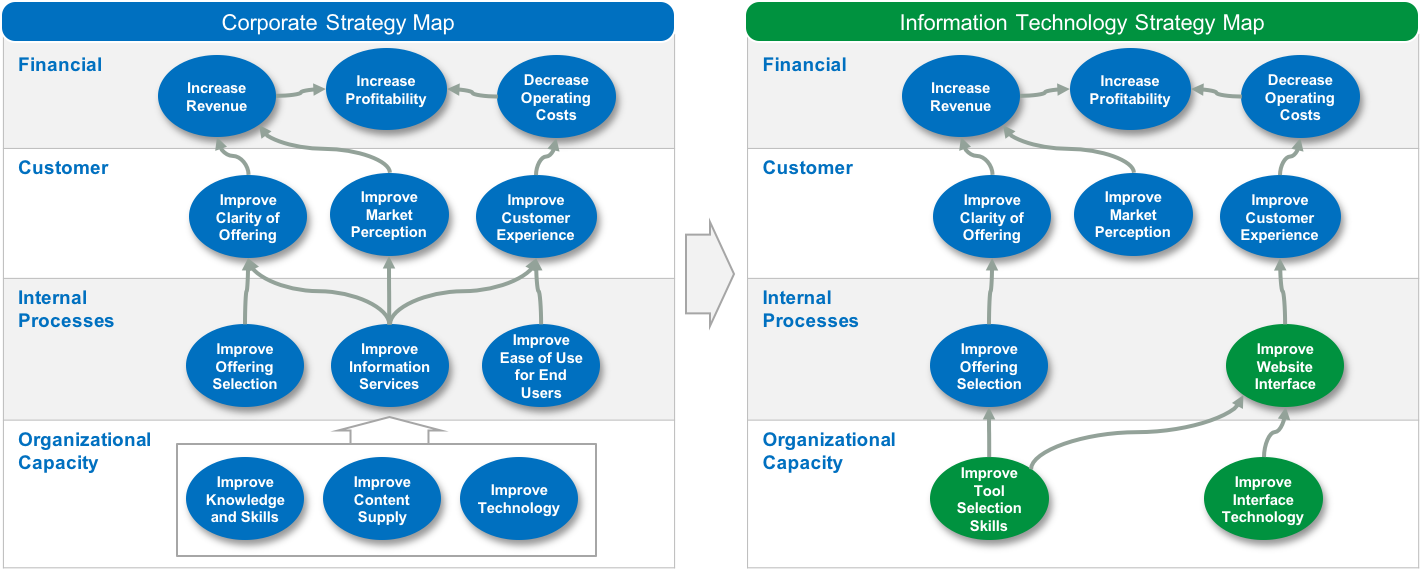Cascading Scorecards with Spider Impact – Cascading scorecards throughout an organisation can be fraught with difficulties without the right process and tools. Frequently we find that even though a scorecard is created at the corporate level as a ‘model’ for the whole organisation, by the time it has been cascaded to the departmental level, it has changed so much it no longer reflects the original corporate objectives. (Clearly, the words used to describe a corporate objective may not translate well to a departmental objective, but both objectives must contribute to the same outcome.)
For example, a corporate objective of ‘Improve Customer Experience’ from the Customer Perspective would almost certainly remain the same when cascaded to the IT Department. However, the IT department’s contributing corporate objective in the Process Perspective of ‘Improve Ease of Use for End Users” would almost certainly be changed to something like ‘Improve Website Interface’. This is best illustrated below:
Managing consistency becomes vitally important when a corporate scorecard is cascaded to multiple departments (and it has to be to ensure an effective strategy!). There are two major considerations related to this 1. Is there someone in place responsible for ensuring that all of the scorecards/strategy maps contribute to the overall strategy? and 2. Is there a tool in place to enable the cascading process?
Having an individual in place is always a good start. It would usually be the Strategy Director. But to ensure success, a tool should be used.
Spider Impact is one such tool. It has a built-in cascade function that can ensure consistency of scorecards from the outset. It does this in two stages by ‘linking’ a master scorecard to all of the cascaded scorecards (and therefore Strategy Maps). Simply put, a master scorecard is created at the corporate level. The first stage is to copy the master scorecard using the ‘linked-scorecard’ function to all divisions and departments. The result is a replica of the master which will automatically update when the master is updated. The second stage is to modify and add any changed language or additional objectives to the division/department scorecards. These, of course, can only be modified at the division/department level.
The cascade/link function provides the means to ensure from the outset consistency across an organisational implementation. If you want to see this function in action, take out a 14 day free trial of Spider Impact and ask for a demonstration of our balanced scorecard software.


